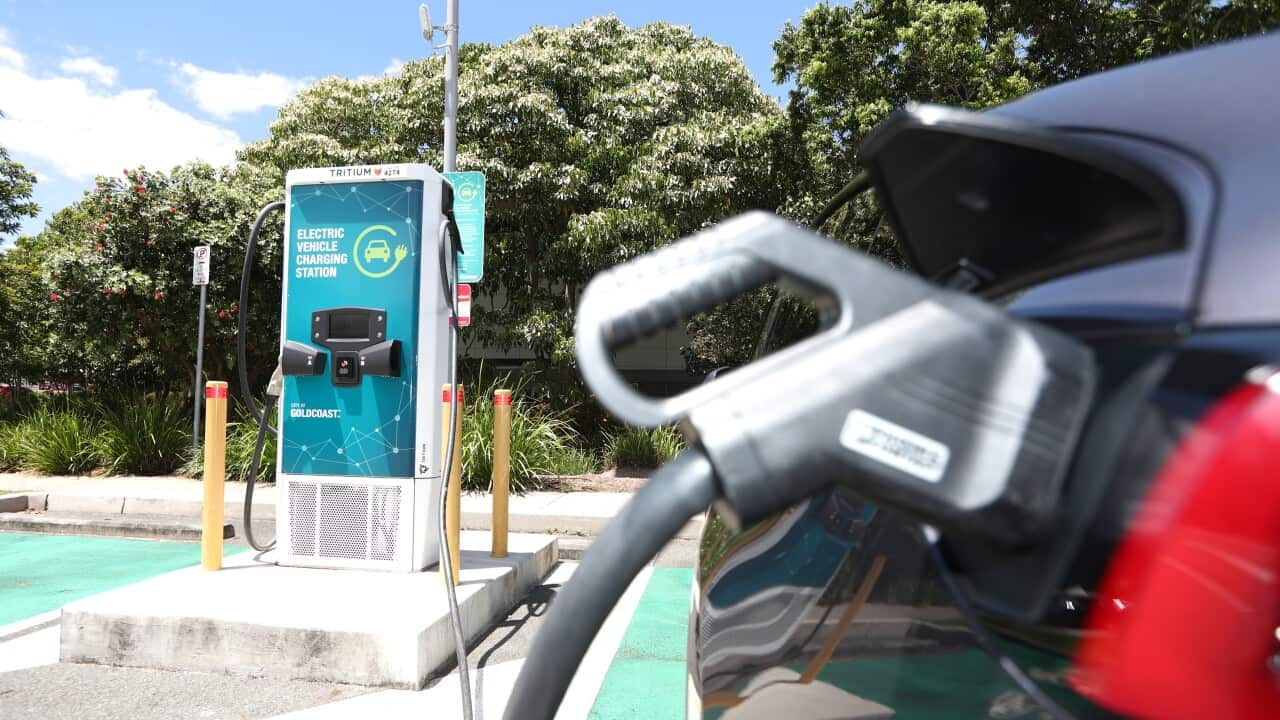Key Points
- Australians with disabilities are being urged to have their say on electric car chargers.
- Researchers want to know what needs to change to ensure more drivers can use them.
- Experts say some electric vehicle infrastructure has been created in a "cowboy" fashion.
New rules to make electric vehicle chargers as easy to use as petrol bowsers are being considered in a push to ensure no one is left stranded in the transport transition.
And the university conducting the consultation is calling for people with disability to reveal their biggest frustrations with the infrastructure, some of which experts say had been created in a "cowboy" fashion.
The study, undertaken by La Trobe University and research centre iMove Australia, is expected to influence updates to electric vehicle charging guidelines issued by Austroads last year.
The consultation comes as the number of electric cars and chargers continues to grow in Australia, with more than 65,000 new vehicles sold during 2023 and more than 900 high-powered public chargers installed by July.
But La Trobe University Centre for Technology Infusion deputy director Erik van Vulpen said early research showed Australia's existing chargers did not suit all motorists and had become something of a "cowboy market".
"Most companies do not think enough about the opportunity to make things accessible," he said.
"To innovate and make the experience seamless is simply good business and if your most challenging customer can use (charging stations) easily that means everybody benefits."
The project report, Guidelines for Accessible EV Charging Stations, has revealed challenges to recharging vehicles including poor lighting around charging points, heavy plugs, insufficient cables, inadequate signage, and limited access to assistance.
Charging stations are often placed on curbs and uneven surfaces, it found, making them difficult to access for people in wheelchairs or with limited mobility.

People with disability have been asked to share their experience with electric car charging stations to help influence future guidelines. Source: AP / Darryl Dyck
"You need to be able to park, you need to be able to get out of the car before you charge, it needs to be accessible, it needs to be safe and that's not always the case."
Proposed guidelines include changes to plugs, cables, charging locations, and apps to make chargers accessible to a wider audience.
The recommendations are due to be provided to Austroads early next year and used to refine rules for low and zero-emission charging infrastructure issued in September 2022 around elements such as site selection, planning, parking, energy supply and plug types.
High-power public car-charging sites in Australia increased by 57 per cent between June 2022 and 2023, according to the Electric Vehicle Council, to reach 558 locations and 967 charging points.
But their reach is expected to grow significantly over the next year, with investments by state governments and firms such as NRMA, Evie Networks, BP, Ampol and Tesla.
Van Vulpen said drivers with disabilities were invited to give feedback on the guidelines and their experience with electric car charging stations on the iMove website over the next three weeks.



